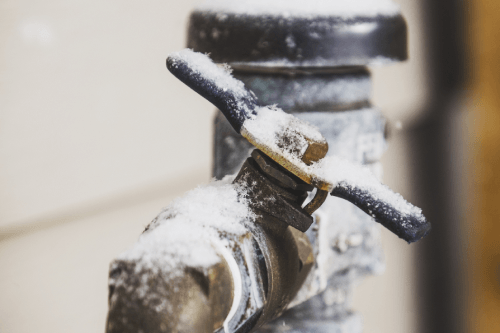Important Advice to Prevent Frozen Plumbing in Winter: Professional Guidance
Important Advice to Prevent Frozen Plumbing in Winter: Professional Guidance
Blog Article
Have you been trying to find information and facts around 6 Ways to Prevent Frozen Pipes?

Cold weather can wreak havoc on your pipes, particularly by freezing pipelines. Below's exactly how to prevent it from taking place and what to do if it does.
Intro
As temperatures decline, the risk of icy pipes rises, potentially bring about pricey repairs and water damage. Recognizing exactly how to stop icy pipelines is vital for home owners in cool environments.
Understanding Frozen Pipes
What causes pipelines to freeze?
Pipelines freeze when revealed to temperature levels listed below 32 ° F (0 ° C) for prolonged periods. As water inside the pipes ices up, it increases, taxing the pipeline walls and possibly creating them to burst.
Threats and damages
Frozen pipes can bring about water interruptions, property damage, and pricey repairs. Ruptured pipelines can flood homes and create comprehensive architectural damage.
Indicators of Frozen Water Lines
Identifying icy pipelines early can avoid them from breaking.
How to recognize frozen pipes
Seek decreased water flow from taps, unusual odors or noises from pipelines, and noticeable frost on exposed pipes.
Avoidance Tips
Shielding vulnerable pipes
Wrap pipelines in insulation sleeves or make use of warmth tape to protect them from freezing temperatures. Focus on pipes in unheated or outside areas of the home.
Home heating techniques
Maintain interior spaces adequately heated, particularly areas with pipes. Open cabinet doors to allow cozy air to flow around pipelines under sinks.
Securing Exterior Pipes
Garden pipes and outside taps
Separate and drain pipes yard tubes before winter season. Mount frost-proof faucets or cover outdoor taps with insulated caps.
What to Do If Your Pipelines Freeze
Immediate actions to take
If you believe frozen pipelines, keep taps available to eliminate pressure as the ice thaws. Make use of a hairdryer or towels soaked in hot water to thaw pipelines gradually.
Long-Term Solutions
Structural changes
Take into consideration rerouting pipes far from exterior walls or unheated locations. Add added insulation to attics, cellars, and crawl spaces.
Updating insulation
Buy high-grade insulation for pipes, attics, and walls. Correct insulation aids preserve regular temperatures and decreases the risk of frozen pipelines.
Final thought
Avoiding frozen pipelines needs proactive actions and fast reactions. By understanding the reasons, signs, and safety nets, house owners can protect their pipes during winter.
5 Ways to Prevent Frozen Pipes
Drain Outdoor Faucets and Disconnect Hoses
First, close the shut-off valve that controls the flow of water in the pipe to your outdoor faucet. Then, head outside to disconnect and drain your hose and open the outdoor faucet to allow the water to completely drain out of the line. Turn off the faucet when done. Finally, head back to the shut-off valve and drain the remaining water inside the pipe into a bucket or container. Additionally, if you have a home irrigation system, you should consider hiring an expert to clear the system of water each year.
Insulate Pipes
One of the best and most cost-effective methods for preventing frozen water pipes is to wrap your pipes with insulation. This is especially important for areas in your home that aren’t exposed to heat, such as an attic. We suggest using foam sleeves, which can typically be found at your local hardware store.
Keep Heat Running at 65
Your pipes are located inside your walls, and the temperature there is much colder than the rest of the house. To prevent your pipes from freezing, The Insurance Information Institute suggests that you keep your home heated to at least 65 degrees, even when traveling. You may want to invest in smart devices that can keep an eye on the temperature in your home while you’re away.
Leave Water Dripping
Moving water — even a small trickle — can prevent ice from forming inside your pipes. When freezing temps are imminent, start a drip of water from all faucets that serve exposed pipes. Leaving a few faucets running will also help relieve pressure inside the pipes and help prevent a rupture if the water inside freezes.
Open Cupboard Doors
Warm your kitchen and bathroom pipes by opening cupboards and vanities. You should also leave your interior doors ajar to help warm air circulate evenly throughout your home.

We were made aware of that editorial on Winter Plumbing Precautions: Preventing Frozen Pipes through a friend on a different blog. Be sure to take the opportunity to promote this blog posting if you appreciated it. Bless you for your time. Kindly come visit our blog back soon.
Click Here To Find Out More Report this page